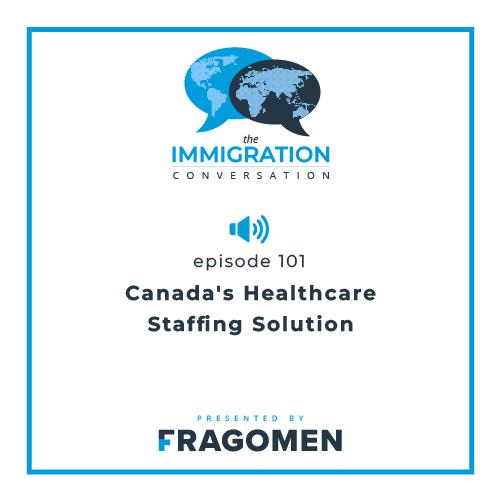The EB-1C Green Card for Multinational Managers and Executives: Exploring Non-Traditional Pathways to Permanent Residency
June 25, 2025
By: Whitney B. Luman
Amid shifting federal immigration priorities, employment-based immigration is facing intensified scrutiny in the form of heightened evidentiary requirements, increasingly narrow interpretation of eligibility criteria, and a significant spike in processing times. As these policy-driven obstacles take shape, both foreign nationals and employers must adopt proactive strategies and explore alternative immigration pathways to effectively navigate the evolving landscape.
The National Interest Waiver (NIW) has offered a more efficient route to permanent residency for foreign nationals whose current or proposed work is deemed “in the national interest” and therefore merits a waiver of the labor certification that is normally required in employment-based permanent residence cases. In 2022, USCIS updated its policy manual with guidance that encouraged more foreign nationals with advanced STEM degrees to seek permanent residency in the United States through the NIW process.
Processing times for the standard employer-sponsored permanent residence process (PERM Labor Certification) have dramatically increased throughout the past few years. As a result, the number of NIW petitions received by USCIS has tripled. USCIS began issuing a greater number of Requests for Evidence (RFEs) and denials for NIWs, and in January 2025, the agency further revised its policy manual, introducing guidance that makes it more challenging to meet the qualifications for a NIW. With increased NIW RFEs and denials as well as lengthy processing times compounded by extreme green card backlogs for standard PERM cases, what other options are there for foreign nationals seeking permanent residency?
The EB-1C Green Card Requirements
The EB-1C green card route for multinational managers and executives is an option that some foreign nationals and employers often would not consider. This is because of a common misconception that only those in the L-1A nonimmigrant visa category may apply for an EB-1C green card. Why is this?
Below are the requirements for an EB-1C green card:
-
-
- Qualifying Foreign Employment:
-
-
- You must have been employed outside the US in a managerial or executive capacity for at least one year in the three years preceding the petition or the most recent lawful nonimmigrant admission if you are already working for the US petitioning employer.
-
-
- Qualifying US Employment:
-
-
- Business Operations: The US employer must have been doing business for at least one year.
- Relationship: There must be a qualifying relationship between the US employer and the foreign employer, typically through ownership or affiliation.
- Job Offer: The US employer must offer a full-time job in a managerial or executive capacity to the applicant.
-
-
- Qualifying Foreign Employment:
-
The L-1A visa is a nonimmigrant visa, or temporary visa, designed for intracompany transferee executives or managers; somewhat unsurprisingly, the eligibility requirements are quite similar to those of the EB-1C immigrant visa. Because the requirements are essentially the same, many people believe that the L-1A visa is the required stepping stone or prerequisite to applying for the EB-1C green card. However, that is not the case. Additionally, despite the similarities in requirements, approval of an L-1A visa does not guarantee automatic approval for an EB-1C green card.
Key Considerations
Instead of nonimmigrant visa classification, the important consideration is the nature of the role abroad and the role in the US. If the employment abroad for the foreign company was in a managerial or executive capacity and the role in the US is also managerial, EB-1C could be a viable option, despite the nonimmigrant visa classification.
One could ask, “If both these roles are managerial, why wouldn’t the employee already have entered the US in the L-1A nonimmigrant visa classification?”
There are several reasons why this could be the case. Perhaps the employee was in a managerial role abroad but transferred to the US in an L-1B specialized knowledge role and was later promoted into a manager position. Perhaps they were selected in the H-1B lottery after transferring to the US and changed from L-1A to H-1B status.
An essential point to remember is that the role abroad must also have been executive or managerial in nature. Due to the recent immigration climate, L-1A blanket petition denials have significantly increased very recently at US consulates abroad, such as Chennai, India. Many employers have taken this into account, opting alternatively to bring in their managers and executives under the L-1B blanket petition. There is no requirement that a manager or executive must be in the L-1A visa classification.
Benefits of the EB-1C Green Card Path
One of the most challenging aspects of any employment-based immigrant visa process is the timeline. Some green card processes require a labor certification be filed with the Department of Labor demonstrating the employer has unsuccessfully recruited for a job and that the foreign worker's employment won't adversely affect wages and working conditions of US workers. This labor certification process can sometimes take a couple of years. Most immigrant visa category approvals result in a waiting list or queue that has formed due to the demand for immigrant visas exceeding the number of visas available in a given year, category, or country, resulting in sometimes a 12+ year wait for a green card for those born in countries such as India or China.
The EB-1C green card is an exception to both of these time obstacles. There is no labor market test required for this category. Additionally, while there is still a bit of a wait for a green card to become available for those born in India and China, currently it is 10 years less than the wait for, say, an EB-2 green card, and those born in any other country currently have no wait on the visa bulletin and are able to file their adjustment of status immediately.
Unlocking the EB-1C for More of the Global Workforce
Because of the streamlined process and significantly lower waiting time, the EB-1C green card is highly demanded. However, most foreign nationals inquiring about it ask how they can first change their nonimmigrant visa classification to L-1A “in order to apply for the EB-1C green card.”
If all other criteria are met and both the abroad role as well as the offered US role are managerial in nature, the nonimmigrant visa classification is not a limiting factor. Therefore, foreign nationals in statuses such as H-1B or L-1B, for example, do not have to limit their green card options to PERM or the NIW. The EB-1C can be successfully utilized for a faster and generally less scrutinized pathway to permanent residency.
Need to Know More?
For questions related to US immigration pathways, please contact Associate Whitney Luman at [email protected].
This blog was published on June 25, 2025, and due to the circumstances, there are frequent changes. To keep up to date with all the latest updates on global immigration, please subscribe to our alerts and follow us on LinkedIn, Twitter, Facebook and Instagram.















